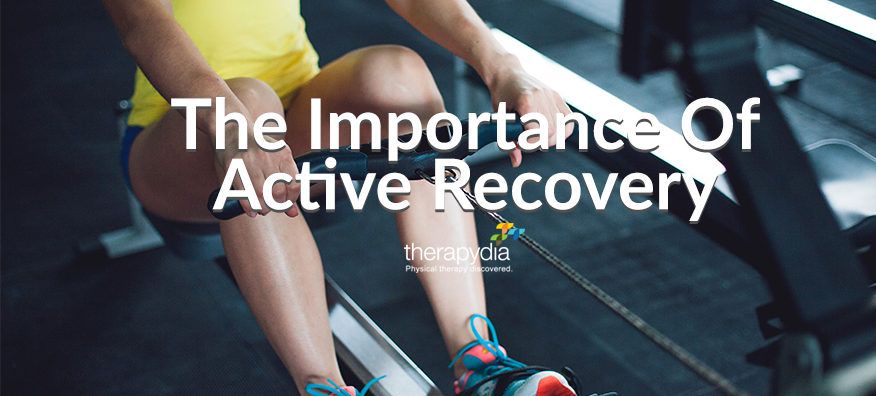
The Importance Of Active Recovery Days
By Rebecca Roberts, PT, DPT
Have you ever felt sore and fatigued the day after a hard work-out, 5K, bike race, soccer match, or other activity? Similarly, you may have experienced increased muscle soreness, stiffness, or fatigue when you start a new workout routine or when you return to your normal workout routine after a lapse in activity. If so, then an active recovery program is for you.
What Is Active Recovery?
Training, competing, or working-out can leave your muscles feeling stiff, sore, or fatigued due to micro-trauma in the muscles as well as a buildup of lactic acid and other waste products. Active recovery is any low-intensity movement that you perform to increase blood flow to your muscles, which helps to repair damaged cells and remove waste products from the cells which can leave you less sore and fatigued. Studies suggest that performing an active recovery can reduce muscle fatigue, (1) decrease inflammation, (2) improve performance, and decrease the length of your recovery. (3) Performing an active recovery may also reduce your risk of injury from over-training.
What Does This Mean?
How you recover from a hard workout is just as important as the activity you do. It is important to plan 1-2 active recovery days into your week, but that does not mean you should just sit on your couch. Change your mindset to think of your “rest days” as “active recovery days,” performing intentional low load movements versus no exercise or exercises at your normal training level.
Some Of Our Therapist’s Favorite Active Recoveries:
Becky – Swimming, gentle bike riding, walking
Kate – Yoga
Stephanie – Light jogging, light weightlifting, surfing, walking, yoga
Tyler – Pilates, corrective exercises, swimming, jogging with my pup, hiking
Other active recovery suggestions:
- Easy hiking or walking your dog (or a friend’s dog or a dog at a shelter)
- Gentle rowing or paddling
- Playing catch or sports with your kids
- Snorkeling or swimming
- Low-intensity Yoga, Pilates, or Tai Chi
- Foam rolling
- Light weight lifting
How Does Physical Therapy Help With Active Recovery?
Physical therapists can help you design a custom exercise program that includes proper warm-up and recovery activities based on your individual activity level, goals, and needs. In addition, if you have tried active recovery and continue to be sore or experience pain, you may have an injury which will benefit from a physical therapy evaluation and customized treatment plan.
If you are experiencing pain or prolonged soreness after a work-out, please contact our office to schedule an appointment and see how our team of skilled physical therapists can help you reach your goals.
Sources
(1) Mika A, Oleksy Ł, Kielnar R, et al. Comparison of Two Different Modes of Active Recovery on Muscles Performance after Fatiguing Exercise in Mountain Canoeist and Football Players. PLoS One. 2016;11(10):e0164216. Published 2016 Oct 5. doi:10.1371/journal.pone.0164216
(2) Peake JM, Roberts LA, Figueiredo VC, et al. The effects of cold water immersion and active recovery on inflammation and cell stress responses in human skeletal muscle after resistance exercise. J Physiol. 2017;595(3):695–711. doi:10.1113/JP272881
(3) Ortiz R, Elder AS, Elder C et al. A systematic review on the effectiveness of active recovery interventions on athletic performance of professional-, collegiate-, and competitive-level adult athletes. J Strength Cond Res. 2019 Aug; 33(8):2275-2287. doi: 10.1519/JSC.0000000000002589.